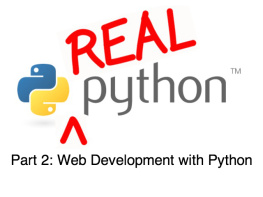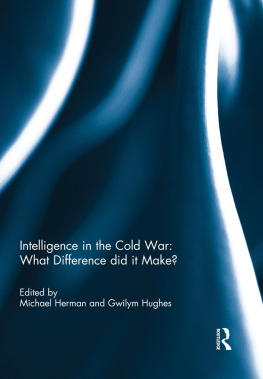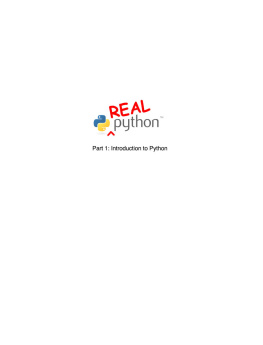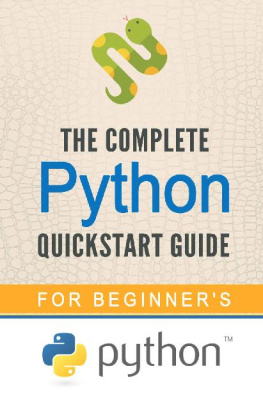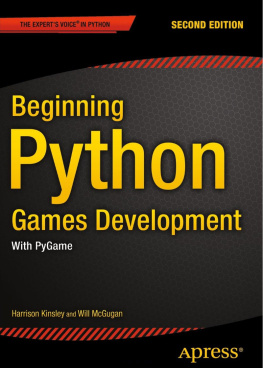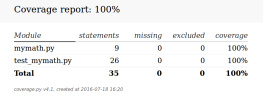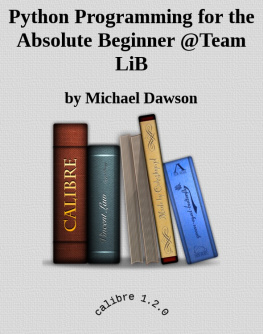Michael Herman - Real Python Part 2: Web Development with Python
Here you can read online Michael Herman - Real Python Part 2: Web Development with Python full text of the book (entire story) in english for free. Download pdf and epub, get meaning, cover and reviews about this ebook. year: 2015, genre: Computer. Description of the work, (preface) as well as reviews are available. Best literature library LitArk.com created for fans of good reading and offers a wide selection of genres:
Romance novel
Science fiction
Adventure
Detective
Science
History
Home and family
Prose
Art
Politics
Computer
Non-fiction
Religion
Business
Children
Humor
Choose a favorite category and find really read worthwhile books. Enjoy immersion in the world of imagination, feel the emotions of the characters or learn something new for yourself, make an fascinating discovery.
- Book:Real Python Part 2: Web Development with Python
- Author:
- Genre:
- Year:2015
- Rating:3 / 5
- Favourites:Add to favourites
- Your mark:
- 60
- 1
- 2
- 3
- 4
- 5
Real Python Part 2: Web Development with Python: summary, description and annotation
We offer to read an annotation, description, summary or preface (depends on what the author of the book "Real Python Part 2: Web Development with Python" wrote himself). If you haven't found the necessary information about the book — write in the comments, we will try to find it.
Real Python Part 2: Web Development with Python — read online for free the complete book (whole text) full work
Below is the text of the book, divided by pages. System saving the place of the last page read, allows you to conveniently read the book "Real Python Part 2: Web Development with Python" online for free, without having to search again every time where you left off. Put a bookmark, and you can go to the page where you finished reading at any time.
Font size:
Interval:
Bookmark:
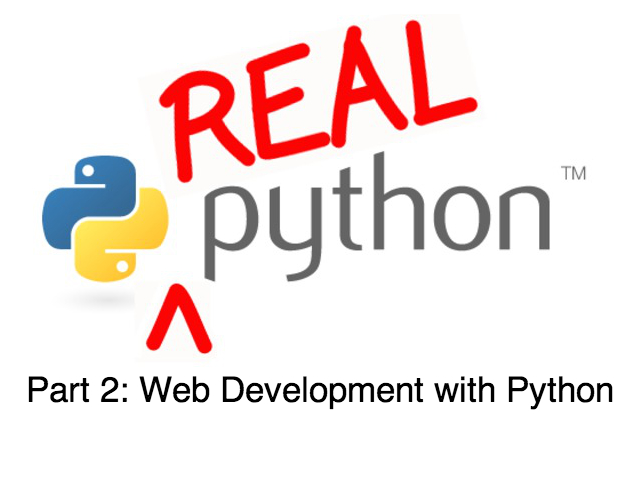
Writing is an intense, solitary activity that requires discipline and repetition. Although much of what happens in that process is still a mystery to me, I know that the my friends and family have played a huge role in the development of this course. I am immensely grateful to all those in my life for providing feedback, pushing me when I needed to be pushed, and just listening when I needed silent support.
At times I ignored many people close to me, despite their continuing support. You know who you are. I promise I will do my best to make up for it.
For those who wish to write, know that it can be a painful process for those around you. They make just as many sacrifices as you do - if not more. Be mindful of this. Take the time to be in the moment with those people, in any way that you can. You and your work will benefit from this.
First and foremost, Id like to thank Fletcher and Jeremy, authors of the other Real Python courses, for believing in me even when I did not believe in myself. They both are talented developers and natural leaders; Im also proud to call them friends. Thanks to all my close friends and family (Mom, Dad, Jeff) for all your support and kindness. Derek, Josh, Danielle, Richard, Lily, John (all three of you), Marcy, and Travis - each of you helped in a very special way that I am only beginning to understand.
Thank you also to the immense support from the Python community. Despite not knowing much about me or my abilities, you welcomed me, supported me, and shaped me into a much better programmer. I only hope that I can give back as much as you have given me.
Thanks to all who read through drafts, helping to shape this course into something accurate, readable, and, most importantly, useful. Nina, you are a wonderful technical writer and editor. Stay true to your passions.
Thank you Massimo, Shea, and Mic. You are amazing.
For those who dont know, this course started as a Kickstarter. To all my original backers and supporters: You have lead me as much as I hope I am now leading you. Keep asking for more. This is your course.
Finally, thank you to a very popular yet terrible API that forced me to develop my own solution to a problem, pushing me back into the world of software development. Permanently.
Michael is a lifelong learner. Formally educated in computer science, philosophy, business, and information science, he continues to challenge himself by learning new languages and reading Infinite Jest over and over again. Hes been hacking away since developing his first project - a video game enthusiast website - back in 1999.
Python is his tool of choice. Hes founded and co-founded several startups and has written extensively on his experiences.
He loves libraries and other mediums that provide publicly available data. When not staring at a computer screen, he enjoys running, writing flash fiction, and making people feel uncomfortable with his dance moves.
Massimo Di Pierro is an associate professor at the School of Computing of DePaul University in Chicago, where he directs the Masters program in Computational Finance. He also teaches courses on various topics, including web frameworks, network programming, computer security, scientific computing, and parallel programming.
Massimo has a PhD in High Energy Theoretical Physics from the University of Southampton (UK), and he has previously worked as an associate researcher for Fermi National Accelerator Laboratory. Massimo is the author of a book on web2py, and more than 50 publications in the fields of Physics and Computational Finance, and he has contributed to many open source projects.
He started the web2py project in 2007, and is currently the lead developer.
This e-book and course are copyrighted and licensed under a Creative Commons Attribution-NonCommercial-NoDerivs 3.0 Unported License. This means that you are welcome to share this book and use it for any non-commercial purposes so long as the entire book remains intact and unaltered. That being said, if you have received this copy for free and have found it helpful, I would very much appreciate it if you purchased a copy of your own.
The example Python scripts associated with this book should be considered open content. This means that anyone is welcome to use any portion of the code for any purpose.
This is not a reference book. Instead, Ive put together a series of tutorials and examples to highlight the power of using Python for web development. The purpose is to open doors, to expose you to the various options available, so you can decide the path to go down when you are ready to move beyond this course. Whether its moving on to more advanced materials, becoming more engaged in the Python development community, or building dynamic web applications of your own - the choice is yours.
This course moves fast, focusing more on practical solutions than theory and concepts. Take the time to go through each example. Ask questions on the forum. Join a local Meetup group. Participate in a hackathon. Take advantage of the various online and offline resources available to you. Engage.
Regardless of whether you have past experience with Python or web development, I urge you to approach this course with a beginners mind. The best way to learn this material is by challenging yourself. Take my examples further. Find errors in my code. And if you run into a problem, use the Google-it-first approach/algorithm to find a relevant blog post or article to help answer your question. This is how real developers solve real problems.
By learning through a series of exercises that are challenging, you will screw up at times. Try not to beat yourself up. Instead, learn from your mistakes - and get better.
NOTE: If you do decide to challenge yourself by finding and correcting code errors or areas that are unclear or lack clarity, please contact me at info@realpython.com so I can update the course. Any feedback is appreciated. This will benefit other readers, and you will receive credit.
Python is a beautiful language. Its easy to learn and fun, and its syntax (rules) is clear and concise. Python is a popular choice for beginners, yet still powerful enough to to back some of the worlds most popular products and applications from companies like NASA, Google, IBM, Cisco, Microsoft, Industrial Light & Magic, among others. Whatever the goal, Pythons design makes the programming experience feel almost as natural as writing in English.
As you found out in the previous course, Python is used in a number disciplines, making it extremely versatile. Such disciplines include:
- System Administration,
- 3D Animation and Image Editing,
- Scientific Computing/Data Analysis,
- Game Development, and
- Web Development.
With regard to web development, Python powers some of the worlds most popular sites. Reddit, the Washington Post, Instagram, Quora, Pinterest, Mozilla, Dropbox, Yelp, and YouTube are all powered by Python.
Unlike Ruby, Python offers a plethora of frameworks from which to choose from, including bottle.py, Flask, CherryPy, Pyramid, Django, and web2py, to name a few. This freedom of choice allows
Font size:
Interval:
Bookmark:
Similar books «Real Python Part 2: Web Development with Python»
Look at similar books to Real Python Part 2: Web Development with Python. We have selected literature similar in name and meaning in the hope of providing readers with more options to find new, interesting, not yet read works.
Discussion, reviews of the book Real Python Part 2: Web Development with Python and just readers' own opinions. Leave your comments, write what you think about the work, its meaning or the main characters. Specify what exactly you liked and what you didn't like, and why you think so.

